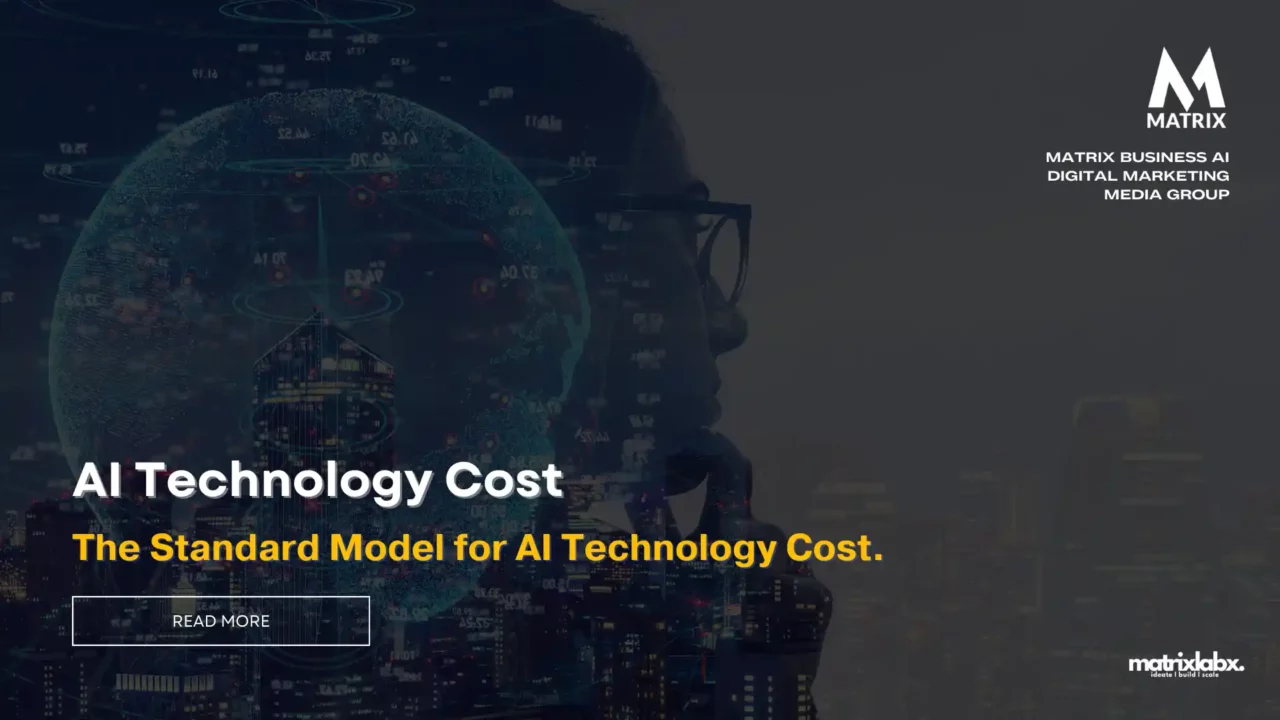The Standard Model for AI Technology Cost.
Read About Understanding The Standard Model for AI Technology Cost.
Artificial Intelligence (AI) is no longer a new term in technology. Across industries, enterprises have embraced AI for its groundbreaking capabilities that transform operations, processes, and service delivery.
However, as the fun begins, the all-important question of cost rears its head, prompting stakeholders to seek clarity on the model for AI technology cost.
Understanding the Model for AI Technology Cost
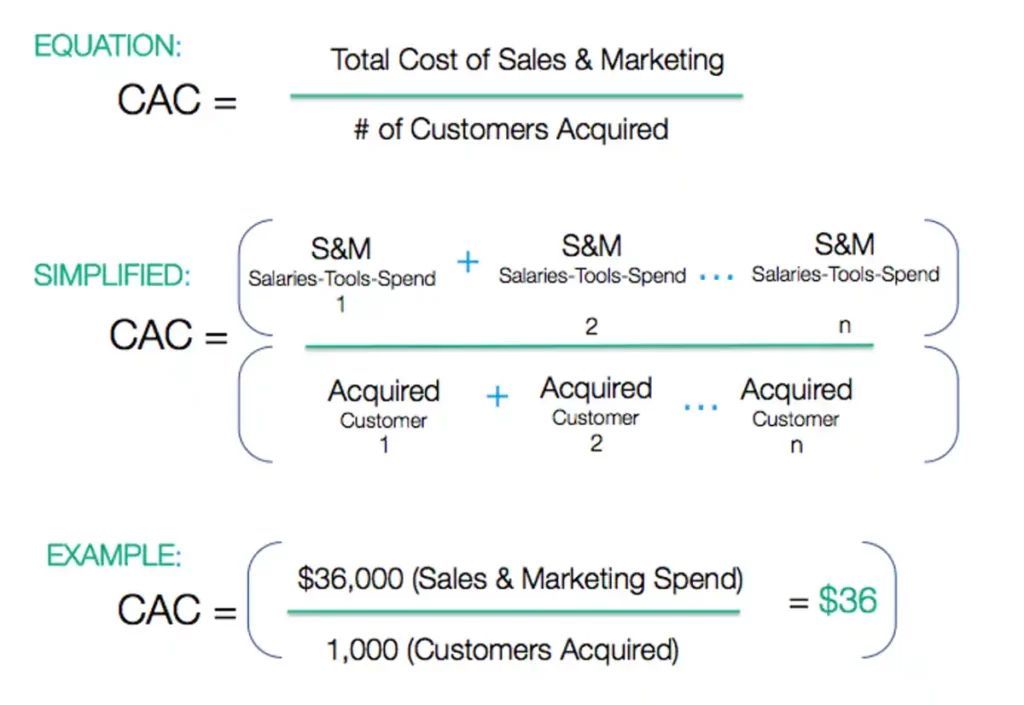
The model for AI technology cost can often appear complex. Still, it essentially breaks down into two main categories: initial investment (which includes development and set-up costs) and ongoing costs (which includes maintenance and update costs). Let’s delve deeper into each category to understand the matrix and parameters of AI technology cost. These are some traditional simple calculations traditionally.
A chief financial officer (CFO) plays a crucial role in understanding and managing the costs associated with artificial intelligence (AI) technology. AI implementation can bring significant benefits, but it also involves substantial expenses.
The CFO’s responsibility lies in effectively analyzing and monitoring these costs to ensure financial sustainability and optimize AI investments.
The Standard Model for AI Technology Cost from MatrixLabX is a comprehensive framework designed to guide organizations in the technology, healthcare, and manufacturing industries in understanding and managing the costs associated with implementing and maintaining AI technologies.
This model is particularly relevant for Chief Marketing Officers (CMOs) and Chief Executive Officers (CEOs) considering or already integrating AI into their business operations.
Why the Standard Model for AI Usage Cost is Important:
- Strategic Budgeting: It helps plan and allocate resources efficiently for AI projects.
- Cost Transparency: Provides a clear breakdown of costs, ensuring no hidden expenses exist.
- ROI Estimation: Assists in estimating the return on investment, which is crucial for justifying AI projects.
The standard model for AI usage cost is important for several reasons:
- It provides a common framework for understanding and comparing AI costs. This can help businesses decide which AI solutions to adopt and how to budget for them.
- It helps identify and quantify the factors contributing to AI costs. This knowledge can be used to optimize AI usage and reduce costs.
- It can help to improve transparency and accountability in the AI procurement process. This can help ensure that businesses get the best value for their money.
Here are some specific examples of how the standard model for AI usage cost can be used:
- A business can use the model to estimate the cost of training and deploying an AI model. This information can be used to compare the cost of different AI solutions and to determine whether an AI solution is affordable for the business.
- A business can use the model to track its AI costs over time. This information can be used to identify trends and areas where costs can be reduced.
- A business can use the model to set budgets for AI projects. This information can help to ensure that AI projects are adequately funded and that costs do not exceed expectations. AI Marketing Plan for Manufacturing Businesses
Overall, the standard model for AI usage cost is a valuable tool for businesses considering AI. It can help businesses to make informed decisions about AI adoption, to optimize AI usage, and to reduce costs.
Here are some additional benefits of using the standard model for AI usage cost:
- It can help businesses to avoid vendor lock-in. Businesses are not tied to a specific vendor’s pricing structure using a standard model.
- It can help businesses to negotiate better pricing with vendors. Businesses can negotiate more favorable pricing with vendors by understanding the factors contributing to AI costs.
- It can help businesses to build a more resilient AI infrastructure. By understanding the costs of different AI solutions, businesses can build an AI infrastructure that is more resilient to changes in pricing or technology.
In conclusion, the standard model for AI usage cost is an important tool for businesses considering AI. It can help businesses to make informed decisions about AI adoption, to optimize AI usage, and to reduce costs.
Unlock Hidden Sales Potential with Sales and Marketing Efficiency Modeling Tools
Lorem ipsum dolor sit amet, consectetur adipiscing elit, sed do eiusmod tempor incididunt ut labore et
dolore magna aliqua. Ut enim ad minim veniam, quis nostrud.
How the Standard AI Model Works:
- Cost Categorization: The model categorizes costs into development, deployment, maintenance, and scaling. This helps in understanding where the majority of the investment is going.
- Phase-wise Breakdown: It outlines costs in different phases of the AI project lifecycle – from initial research to long-term maintenance.
- Benchmarking: Offers industry benchmarks for similar AI projects, allowing companies to compare their expenditures.
As a chief financial officer (CFO), understanding the interplay between the Standard AI Model and Google Vertex AI is crucial for optimizing AI investments and ensuring cost-effectiveness. The Standard AI Model provides a structured framework for assessing AI costs, while Google Vertex AI serves as an AI-powered platform that seamlessly integrates with this framework.
Standard AI Model: A Framework for Cost Evaluation
The Standard AI Model outlines the key cost components of AI implementation, encompassing upfront and ongoing expenses. These components include:
- Infrastructure Costs: These involve the expenses associated with the hardware and software resources required for AI operations, such as servers, GPUs, and data storage.
- Data Acquisition and Preparation: Gathering and preparing high-quality data is essential for training AI models. The costs of acquiring, cleaning, and organizing data can be significant.
- Model Development and Training: Developing and training AI models require specialized expertise and computing resources, leading to associated costs.
- Deployment and Maintenance: Deploying and maintaining AI models in production environments involves ongoing infrastructure, monitoring, and support costs.
- Talent and Consulting: Acquiring and retaining AI talent, including data scientists, engineers, and consultants, contributes to the overall AI cost structure.
Google Vertex AI: A Platform for Cost-Effective AI Implementation
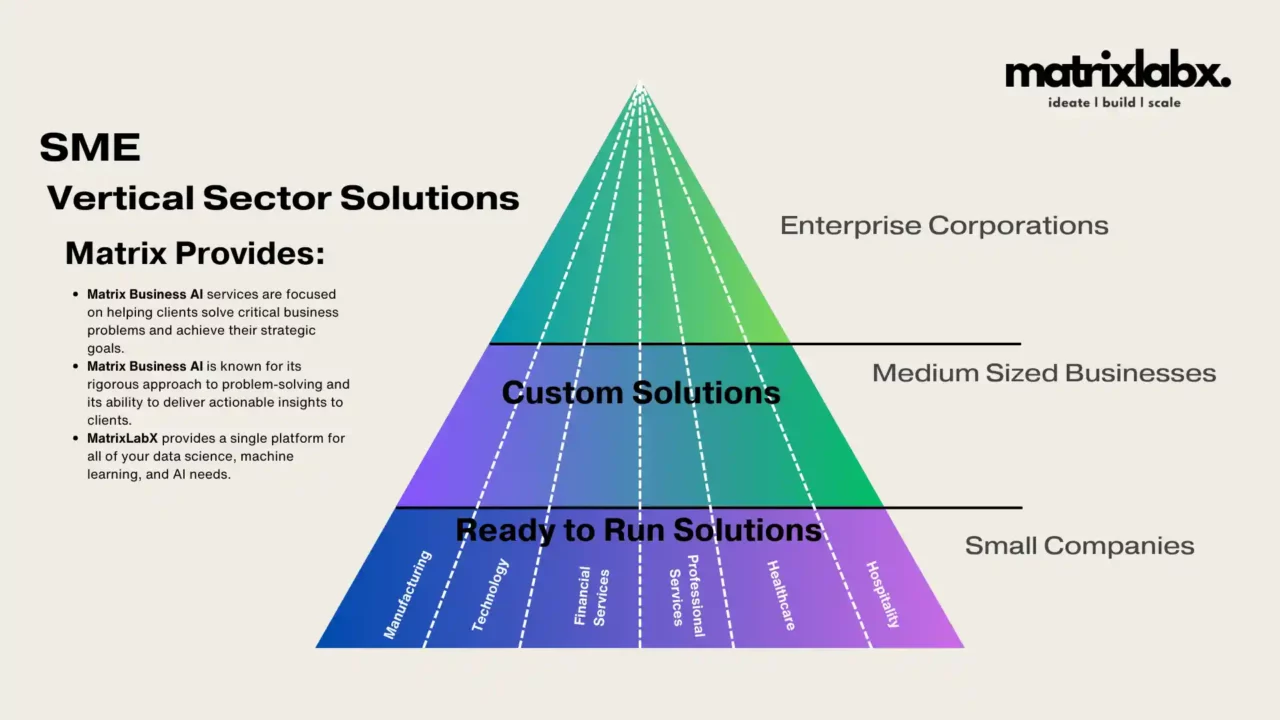
Google Vertex AI, a unified AI platform, integrates seamlessly with the Standard AI Model, enabling CFOs to manage and optimize AI costs effectively. Here’s how:
- Cost Transparency: Vertex AI provides granular cost tracking and reporting, allowing CFOs to gain insights into AI expenses across various projects and components.
- Cost Optimization Tools: Vertex AI offers tools for optimizing resource utilization, such as auto-scaling and model compression, helping to reduce infrastructure costs.
- Pre-trained Models: Vertex AI’s extensive library of pre-trained models reduces the need for extensive model development, lowering the associated costs.
- Automated Workflows: Vertex AI’s automated workflows for data preparation, model training, and deployment streamline AI processes, reducing manual effort and costs.
- MLOps Integration: Vertex AI integrates with MLOps practices, enabling continuous monitoring, debugging, and improving AI models, preventing costly errors and inefficiencies.
CFO’s Role in AI Cost Management
CFOs play a critical role in leveraging the Standard AI Model and Google Vertex AI to manage AI costs effectively:
- Establish AI Cost Policies: Define clear guidelines for AI expenses, ensuring alignment with business objectives and financial constraints.
- Implement Cost Tracking and Monitoring: Employ tools like Vertex AI’s cost reporting features to track AI expenses and identify potential areas for optimization.
- Foster a Culture of Cost Awareness: Educate employees about AI costs and encourage responsible resource utilization.
- Evaluate AI Investments: Regularly assess the cost-effectiveness of AI projects and make informed decisions about resource allocation.
- Collaborate with AI Teams: Work closely with AI teams to understand cost drivers and identify opportunities for cost reduction.
By effectively utilizing the Standard AI Model and Google Vertex AI, CFOs can ensure that AI investments are aligned with business goals, optimized for cost-effectiveness, and contribute to the organization’s long-term financial success.
What the Standard Model Includes:
- Hardware Costs: This includes the cost of servers, GPUs, and other hardware essential for AI processing.
- Software Costs: Licensing fees for AI frameworks and tools.
- Data Acquisition and Processing Costs: Data gathering and preparing data for AI algorithms is expensive.
- Talent Costs: Salaries and training costs for AI specialists and data scientists.
- Compliance and Security: Costs associated with ensuring AI systems comply with industry regulations and secure against cyber threats.
- Operational Overheads: Includes costs for integrating AI into existing systems and workflows.
Relevance to Different Industries:
- Technology Industry: For tech companies, AI is often central to product innovation and customer experience enhancement. Understanding cost structures can help in developing competitive pricing strategies.
- Healthcare Industry: AI in healthcare requires significant data security and compliance investment. The model helps in estimating these specific costs.
- Manufacturing Industry: The model aids in calculating the ROI of AI in automation and predictive maintenance, which are critical in manufacturing.
For CMOs and CEOs in the technology, healthcare, and manufacturing sectors, understanding the Standard Model for AI Technology Cost from MatrixLabX is essential for making informed decisions about AI investments.
Are Your Marketing Efforts a Shot in the Dark? Let’s Turn on the Spotlight!
Imagine having the clarity of seeing your marketing strategy from a bird’ s-eye view and understanding every nuance of your campaigns. Our comprehensive audit delves into the core of your marketing DNA, dissecting each campaign with surgical precision to identify the powerhouse strategies and weed out the underperformers.

Google Vertex AI vs. IBM Watson: A Comparative Overview
Pricing
| Feature | Google Vertex AI | IBM Watson |
|---|---|---|
| Pricing Model | Pay-as-you-go | Pay-as-you-go |
| Cost per GPU hour | $1.20 | $3.00 |
| Cost per TPU hour | $0.20 | $0.60 |
| Storage Cost | $0.023 per GB per month | $0.069 per GB per month |
| Feature | Google Vertex AI | IBM WatsonX |
|---|---|---|
| Pre-trained models | Deploy models to production in various ways, including APIs, web applications, and mobile apps. | Easy-to-use tools for training custom models on your data |
| Custom model training | Easy-to-use tools for training custom models on your data | Deploy models to production in a variety of ways, including APIs, web applications, and mobile apps. |
| Model deployment | Over 100 pre-trained models are available for various tasks, including natural language processing, computer vision, and speech recognition. | Deploy models to production in a variety of ways, including APIs, web applications, and mobile apps |
| Monitoring and observability | Comprehensive monitoring and observability tools to track model performance and identify potential issues | Comprehensive monitoring and observability tools to track model performance and identify potential issues |
Recommendation
For a company in the technology space with $100 million in sales, Google Vertex AI is the more cost-effective option.
Vertex AI is significantly cheaper at $1.20 per GPU hour than IBM Watson’s $3.00 per GPU hour. Vertex AI offers a wider range of pre-trained models and features better suited for technology companies, such as natural language processing and computer vision. Small companies under $5,000,000 can use ChatGTP and set up workflow automation at a smaller scale. AI Product Management: Why Software Product Managers Need to Understand AI and Machine Learning
Model for AI Technology Cost
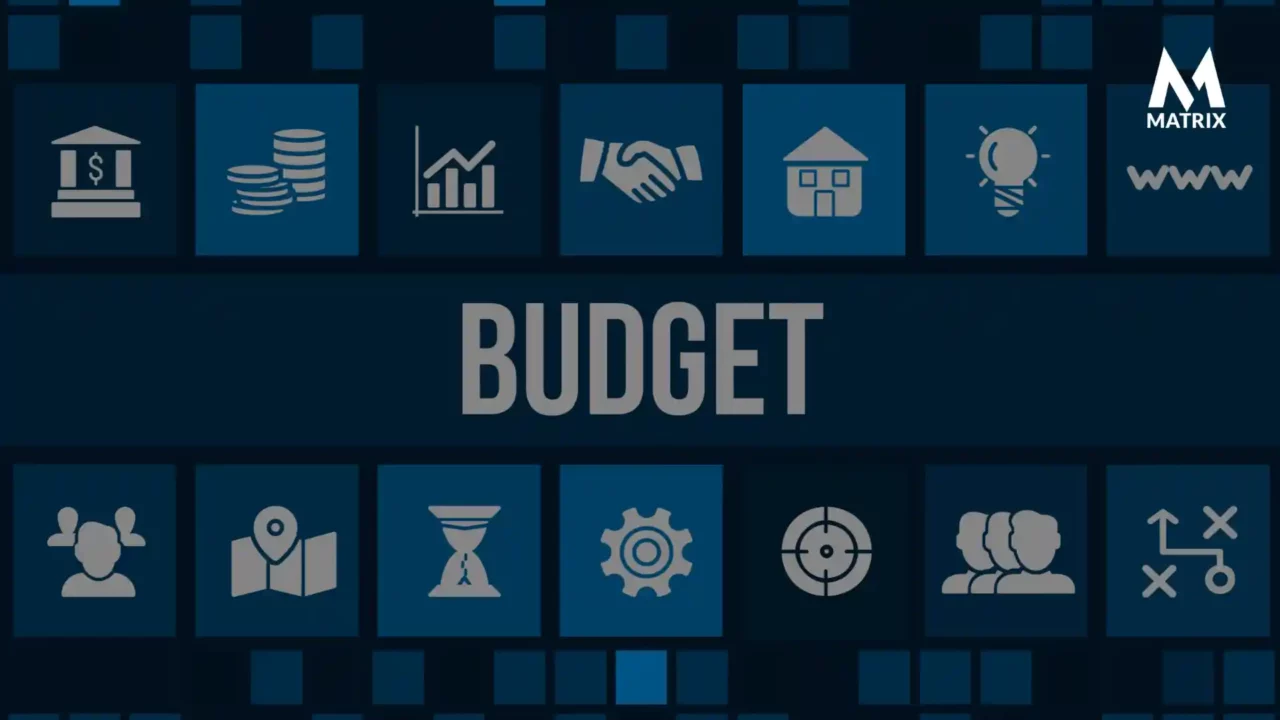
A comprehensive AI technology cost model encompasses various factors contributing to the overall expenditure. These factors can be categorized into three main stages:
1. Planning and Design:
- Business Case Analysis: Evaluating AI projects’ potential return on investment (ROI) and financial impact.
- Solution Design: Estimating the costs of hardware, software, infrastructure, and data acquisition.
- Talent Acquisition: Identifying and hiring AI specialists, data scientists, and developers.
2. Development and Implementation:
- Software Development: Cost of developing custom AI algorithms, models, and applications.
- Hardware and Infrastructure: Procurement and maintenance of servers, GPUs, and data storage systems.
- Data Acquisition and Preparation: Collecting, cleaning, and preparing large datasets for AI training.
3. Deployment and Maintenance:
- Deployment and Integration: Integrating AI solutions into IT systems and business processes.
- Ongoing Maintenance and Updates: Maintaining AI models, retraining them with new data, and addressing software bugs.
- Monitoring and Performance Optimization: Constant AI performance and resource utilization monitoring to identify cost-saving opportunities.
Analyzing and Monitoring AI Costs
CFOs can employ various techniques to analyze and monitor AI costs effectively:
- Cost Allocation: Attributing AI expenses to specific projects, departments, or business units.
- Cost-Benefit Analysis: Assessing the financial benefits of AI projects against their associated costs.
- Benchmarking: Comparing AI costs to industry standards and competitor practices.
- Real-time Monitoring: Using analytics tools to track AI resource consumption and identify cost anomalies.
- Forecasting and Budgeting: Accurately forecasting future AI costs for informed budgeting and financial planning.
By implementing a comprehensive cost management strategy, CFOs can ensure that AI investments are aligned with business objectives and deliver a positive financial impact.
Initial Investment Cost
As the name suggests, the initial investment cost encompasses everything from the project’s inception to its launch. It includes data collection, algorithm design, software development, hardware procurement, and system integration. I want to put this into some contacts: enterprise and AI systems are moving to more automation.
The complexity of the project heavily determines this cost. The more complex the project, the higher the cost can escalate.
Initial Investment Cost for AI-Generated Content
Activate Your Brand For More Sales Today!
As a chief financial officer (CFO), it’s crucial to provide the Board of Directors with a clear understanding of the initial investment costs associated with implementing AI-generated content for our products and services in the financial services industry. This presentation will outline the key cost components and provide estimates for a $20 million company.
Cost Breakdown
The initial investment in AI-generated content can be categorized into three main areas:
- Technology Infrastructure includes the hardware, software, and data storage required to support AI content generation. For our company, we estimate an initial investment of $2 million to establish a robust and scalable AI infrastructure.
- AI Development and Deployment: This encompasses the development of AI models, integration with existing systems, and deployment across our product and service offerings. We expect to allocate $3 million towards this phase.
- Talent Acquisition and Training: Implementing AI requires specialized data science, machine learning, and natural language processing expertise. We anticipate hiring and training a team of AI specialists for $1.5 million.
Total Initial Investment
Based on these cost estimates, the initial investment for implementing AI-generated content in our financial services company would be approximately $6.5 million. This investment will be spread across the three phases mentioned above, with potential adjustments based on specific project requirements and vendor negotiations.
Projected Return on Investment (ROI)
While the initial investment in AI may seem substantial, the potential ROI is significant. AI-generated content can help us:
- Enhance the personalization of our products and services, increasing customer satisfaction and loyalty.
- Improve the efficiency of content creation, reducing production costs and time to market.
- Expand our reach and target new customer segments with tailored content.
- Gain a competitive advantage by leveraging AI to deliver cutting-edge content solutions.
Financial Considerations
In addition to the initial investment, ongoing costs are associated with maintaining and updating AI systems. However, these costs are expected to be offset by AI-generated content’s long-term benefits.
Implementing AI-generated content presents a strategic opportunity for our company to enhance our offerings, improve efficiency, and gain a competitive edge in the financial services industry. While an initial investment is involved, the potential ROI and long-term benefits make this a sound financial decision. How to Use AI Digital Marketing to Transform Your Marketing Results
Additional Considerations
- The cost estimates are based on current industry standards and our company’s needs. Actual costs may vary depending on specific project requirements and vendor selections.
- The success of AI-generated content implementation will depend on data quality, AI model selection, and effective integration with existing systems.
- Monitoring and evaluating AI performance will be crucial to optimize resource utilization and maximize ROI.
By carefully considering these factors and making informed decisions, our company can effectively harness the power of AI-generated content to achieve its financial and strategic goals.
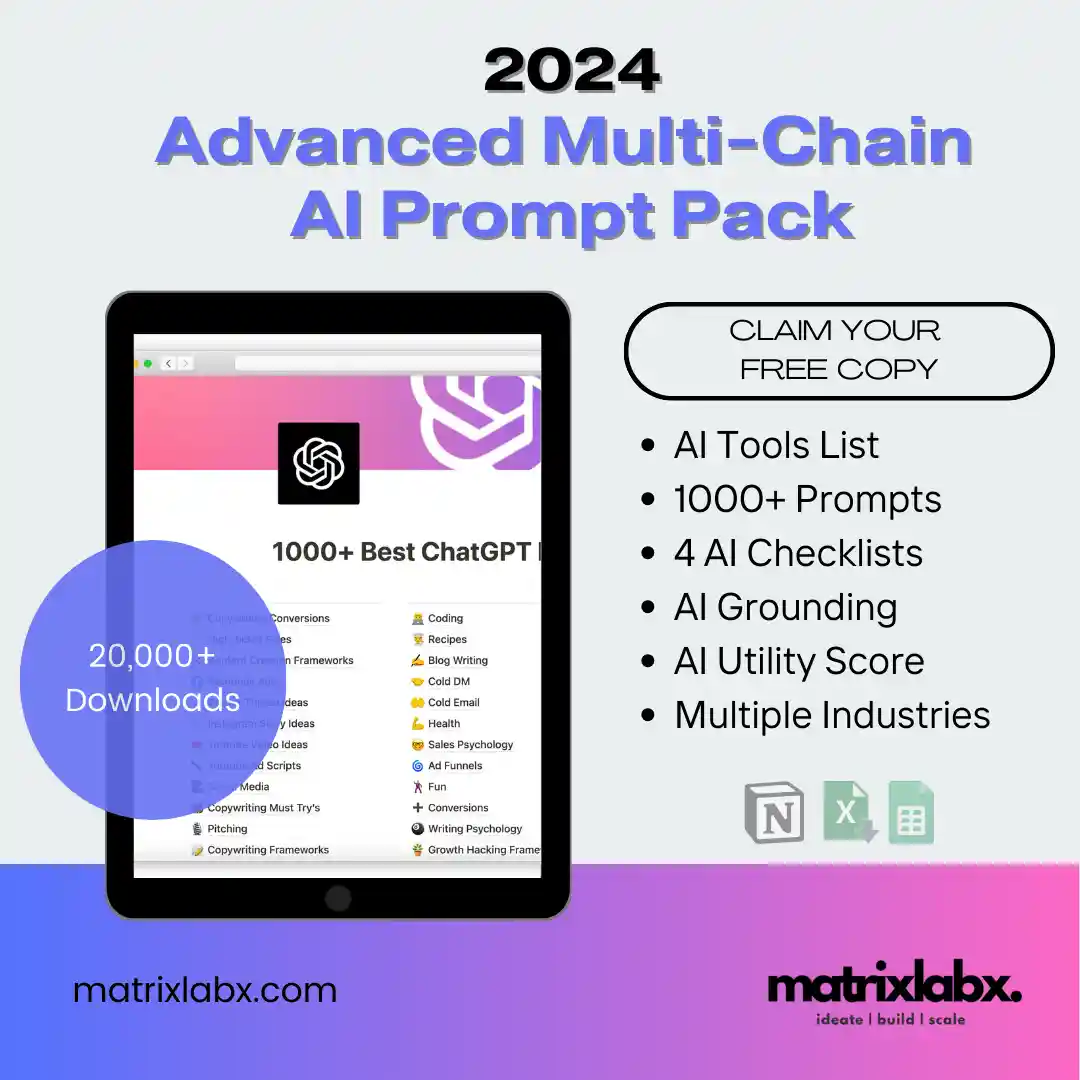
Initial Investment Cost for AI-Generated Content Implementation
The proposed initial investment cost for implementing AI-generated content in our healthcare products and services to the Board of Directors. As you know, AI is rapidly transforming the healthcare industry, and we can leverage this technology to enhance our offerings and gain a competitive edge.
Investment Overview
The initial investment for AI-generated content implementation is estimated at $20 million.
This includes the following costs:
- Software and hardware: $5 million
- Data acquisition and preparation: $3 million
- AI development and training: $7 million
- Change management and training: $2 million
- Consulting and project management: $3 million
We anticipate that this investment will be recouped within three years through increased sales and improved operational efficiency.
Benefits of AI-Generated Content
The implementation of AI-generated content will provide our company with several key benefits, including:
- Improved content quality and consistency: AI can generate high-quality, personalized content that is tailored to the specific needs of our patients and healthcare providers.
- Increased content production: AI can generate content much faster than human writers, allowing us to produce more content and reach a wider audience.
- Reduced content costs: AI can help us reduce our content production costs by automating many manual tasks in creating and publishing content.
- Enhanced customer experience: AI-generated content can provide customers with a more personalized and engaging experience.
Implementation Plan
We have developed a detailed implementation plan for AI-generated content. This plan includes the following key milestones:
- Q1: Select AI vendors and partners
- Q2: Develop AI content models and training data
- Q3: Integrate AI-generated content into our products and services
- Q4: Launch AI-generated content to our customers
Risk Mitigation
We have identified and assessed the following risks associated with AI-generated content implementation:
- Data security and privacy: We will implement robust data security measures to protect our patients’ personal health information.
- Algorithmic bias: We will take steps to ensure that our AI algorithms are unbiased and fair.
- Human oversight: We will maintain human oversight of all AI-generated content to ensure accuracy and appropriateness.
We believe that implementing AI-generated content is a strategic investment that will position our company for success in the future. We are confident that the benefits of this investment will outweigh the costs, and we are committed to mitigating any potential risks.
Ongoing Costs
Once the AI system is up and running, the cycle of regular updates, maintenance, and fine-tuning begins – all of which make up the ongoing costs. Moreover, it’s inevitable to encounter challenges and modifications once the AI system is live. Thus, factoring in these ongoing costs is crucial while considering the overall model for AI technology cost.
The Role of Scale in AI Cost
It’s crucial to remember that economies of scale apply to AI costs, too. The cost per unit decreases when the volume increases.
Therefore, while implementing an AI system may seem costly initially, the cost per use decreases significantly as usage increases, offering value for money in the long run.
Human Capital and AI Cost
The cost of AI technology isn’t solely about the technology itself. The human resources needed to develop, implement, manage, and maintain AI systems forms a significant part of the capital expense.
Whether it’s data scientists, AI specialists, or IT support staff, the skilled personnel required to ensure the smooth functioning of AI systems contribute to the total AI cost.
The cost of human capital and AI in a $100 million financial services firm can vary significantly depending on the firm’s specific business model, technological infrastructure, and staffing requirements. However, a general estimate suggests that human capital costs may account for around 60% of total operating expenses, while AI-related costs may range from 5% to 15%.
Human Capital Costs
Human capital costs encompass all expenses associated with hiring, retaining, and managing employees. These costs typically include salaries, benefits, payroll taxes, training and development, and recruitment expenses. In the financial services industry, human capital costs are often higher than in other industries due to the need for specialized skills and expertise.
For a $100 million financial services firm, human capital costs could range from $60 million to $90 million annually, depending on the firm’s size, employee structure, and compensation levels.
AI-Related Costs
AI-related costs encompass all expenses associated with implementing, developing, and maintaining AI systems. These costs can include:
- Software and hardware costs: The purchase or licensing of AI software and hardware, including servers, GPUs, and data storage.
- Data acquisition and preparation: Data gathering, cleaning, and organizing data for AI training and operation.
- Model development and training: The development and training of AI models may require specialized expertise and compute resources.
- Deployment and maintenance: The deployment and maintenance of AI models in production environments, including ongoing monitoring, support, and updates.
AI-related costs for a $100 million financial services firm could range from $5 million to $15 million annually, depending on the firm’s scope of AI implementation and the complexity of its AI systems.
Cost Optimization Strategies
Financial services firms can implement various strategies to optimize their human capital and AI costs, such as:
- Automating routine tasks: Utilizing AI to automate repetitive tasks can reduce the need for human labor, freeing up employees to focus on more strategic and value-added activities.
- Investing in employee training: Upskilling employees to adapt to the changing technological landscape can enhance their productivity and reduce the need for hiring specialized AI talent.
- Adopting cloud-based AI solutions: Cloud-based AI platforms can provide cost-effective access to AI capabilities without the upfront investment in hardware and infrastructure.
- Leveraging open-source AI tools: Open-source AI tools and frameworks can reduce software licensing costs and provide flexibility in AI development.
- Implementing MLOps practices: Establishing MLOps practices can streamline AI development and deployment processes, reducing time-to-market and improving cost-efficiency.
Financial services firms can balance technological advancement and financial sustainability by carefully evaluating and optimizing their human capital and AI costs.
Open-source and Cloud: Lowering AI Technology Cost
Interestingly, the model for AI technology cost is becoming more affordable, thanks to the advancement in open-source platforms and cloud technology.
They offer a conducive and cost-effective environment for designing, launching, and maintaining sophisticated AI systems, thus providing an affordable and efficient solution appealing to a broad spectrum of enterprises.
Conclusion
Navigating AI technology cost is far from straightforward; it requires a comprehensive understanding of the techno-financial dynamics behind it.
The careful consideration of factors affecting these costs, such as initial and ongoing expenses, the scale of implementation, human capital, open-source platforms, and cloud technology, can provide a robust structure to invest wisely and effectively.
With a strong grasp of the model for AI technology cost, you’ll be better equipped to make informed decisions about AI technology investment, ensuring your enterprise stays ahead of the curve in today’s competitive technological landscape. Remember, the aim is not to minimize cost but to maximize value.

